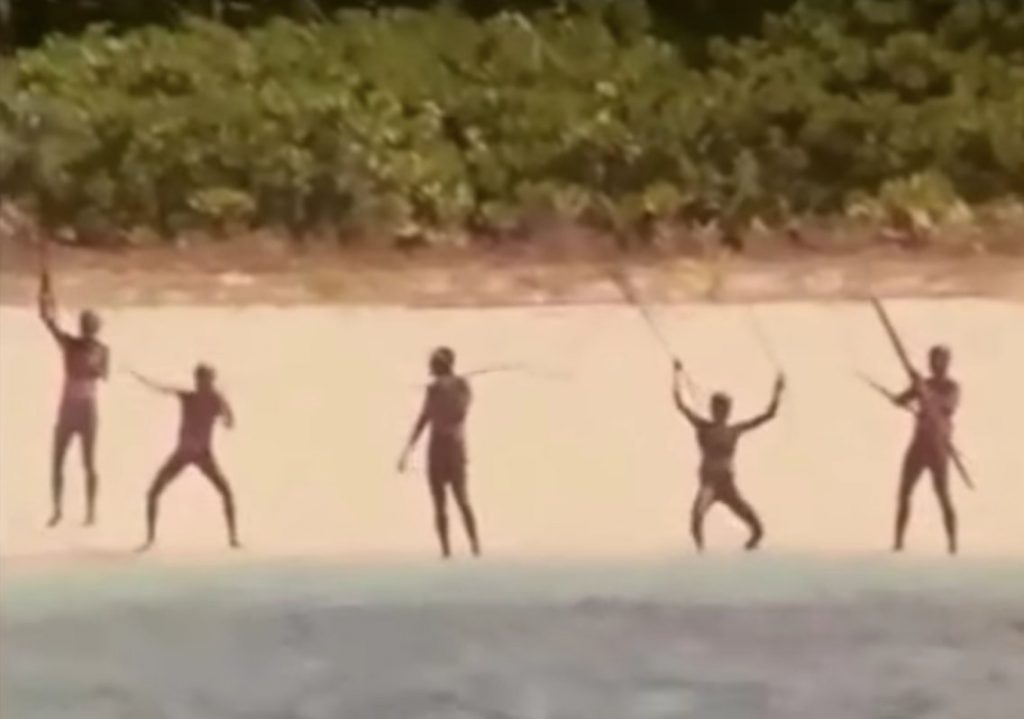“Their association with outsiders has bought them nothing but harm, and it is a matter of great regret to me that such a pleasant race are so rapidly becoming extinct.”
– Maurice Vidal Portman, Officer in Charge of the Andamanese (1879 – 1901), in a presentation to the Royal Geographical Society titled, “The Exploration and Survey of the Little Andamans” on January 30, 1888.
On November 17, 2018, John Allen Chau, an American missionary was probably killed by the Sentinelese, an indigenous people of the North Sentinel Island in the Bay Of Bengal of India, as he tried to make contact with them in his attempts to convert them to Christianity.
Though his death is heartbreaking then any death is sad – there is a family grieving a loss and a life has been cut short – the young man may carry some blame for his early demise.
The circumstances of his death also present an opportunity to examine the history and shed some light on what indigenous people had to go through as Europeans colonized the world.
In spite of a ban on tourists making contact with this indigenous people to protect them from diseases, in spite of the fact that it is known that they do not want any outside contact, in spite of the fact that Chau could not even speak their language and the Sentinelese definitely did not understand English, Chau was so convinced of the need of the Sentinelese for salvation that he broke Indian law on three occasions as he traveled to the island. He probably lost his life on the third attempt.

“The Sentinelese”. Image borrowed from “Business Insider India”
The stubborn insistence of Chau to reach the islanders resembles that of most missionaries. In their zeal to spread the Word, they often do not consider a very important issue – that of immunity and the spread of diseases to indigenous people.
Let’s take the example of smallpox.
Smallpox was a terrible viral disease. Before its eradication was announced on May 8, 1980, at the 33rd World Health Assembly, it had a mortality of about 30%. Those who survived had to live with extensive skin scarring. Sometimes blindness ensued from corneal scarring.
The disease is believed to have originated in ancient Egypt and spread from there to Europe and Asia. Several ancient epidemics like the Plaque of Athens in 430 BC, the Antonine Plaque (165-180) and the Plaque of Cyprian (251-266) in the Roman Empire are all thought to be due to smallpox.
The disease was still ravaging the European continent even as Columbus sailed to the New World. Smallpox till then, was unknown among Native Americans so they had developed absolutely no immunity to this deadly disease like the Europeans.
From around 1519-20 when Cortes landed in Mexico till about the end of the18th century, smallpox will lead to the deaths of around 90% of the Native Indian population in the Americas.
The introduction of smallpox by European colonizers would also lead to the wiping out of indigenous tribes like the Khoi Sai in South Africa in 1713 and the Aborigines in Australia and New Zealand.
Smallpox may have been the most devastating but the colonizers spread other diseases like the flu, rinderpest, and syphilis.
Thus the appearance of European colonizers among the indigenous people of the Americas, Africa, Australia, and Asia meant possible deaths from the unknown diseases the colonizers carried.
Besides the actual spreading of diseases through contact, the forceful changing of the customs and practices of the indigenous people by the European colonizers lead to some deleterious health effects too. In Africa, for example, a lot of the diseases like cholera and sleeping sickness that ravage the continent were held in check through the nomadic lifestyle of the indigenes. Once the indigenous people were forced into towns by the Europeans, issues of clean water and sanitation become real issues and led to the spread of diseases.
This forceful changing of the customs, lifestyles, beliefs, and practices of indigenous folks around the world by European colonizers was often spearheaded by what could only be described as the cultural arm of the Colonizers – the missionaries. Wielding the Bible and promising salvation, they forced indigenous folks to not only forsake their traditional beliefs but also to change their lifestyles.
Now missionaries have through history done a great deal in places like Africa but they also in many cases spearheaded the western domination, providing a moral basis for it. They spearheaded the land grabs and provided a theological basis for colonization, the slave trade, apartheid, and segregation, even if the Quakers helped end the TransAtlantic Slave Trade.
Reports from the Congo tell of missionaries who sold the indigenes off to the slave traders. The sentiment is probably best captured in this saying made popular by Bishop Desmond Tutu:
“When the missionaries came to Africa they had the Bible and we had the land. They said ‘Let us pray.’ We closed our eyes. When we opened them we had the Bible and they had the land.”
Thus the appearance of missionaries did not always fortell good things and so the Sentinelese have every reason to be suspicious. Events in the past did not help either.
In 1880, A British naval officer called Maurice Vidal Portman visited the island in efforts to make contact with the very reclusive tribe. They all hid from him but for an old couple and four children. He captured them and took them to the British post of Port Blair on the neighboring Andaman Island. The old couple died shortly afterward and Portman returned the children with gifts, that the islanders probably never saw as gifts. Over the years, they have resisted all attempts of foreign contact, even killing two fishermen who accidentally drifted on to the island in 2006. Even a National Geographic Team was attacked with their choice of weapons – arrows.
If one looks at what has happened to the indigenous people on the Andaman archipelago, of which the North Sentinel Islands are a part, one cannot blame the Sentinelese for being too wary. The Andamanese people, possible migrants from the African continent, have lived on those islands for over 25,000 years. There were 5 main tribes – the Great Andamanese, the Jarawa, the Jangil, the Onge and the Sentinelese. At the end of the 18th century, when Europeans first showed up, there were over 7000 of them. As of about 2010, there were 52 Great Andamanese , 380 Jarawas, about 100 Onge and maybe 100 – 200 Sentinelese left. The Jangil went extinct in 1921. They have been wiped out by disease, violence and loss of territory.
The Jarawa and Sentinelese have survived due to a stubbornness and refusal to make contact with the outside world. Can you blame them?
There is every possibility that if Chau had made contact with them, they could have contracted bacteria and viruses from him that could wipe them out. Even the contact with his corpse endangers their very existence.
In the past, an army would have been sent to punish the Sentinelese for killing a missionary. They all would have been killed or enslaved. Even today, that could still happen then very little can stand in the way of the forceful conversion to Christianity that the West has touted as a prerequisite for civilization for centuries.
I guess even if contact with Europeans killed off indigenous tribes, they all died saved. I hope the Indian government will keep protecting them and the rest of the world will learn to accept differences and diversity. We could all still learn from people who live in tune with the very Nature we are so busy destroying through civilization.

A well documented socio-economic history which tells us where we are today! !!One of the best medical research documentaries I ever came across. Thanks for the unending statistics.
This is a great insight into colonization. Looks like it was well orchestrated – using the diseases, religion and way of life to take over tribes.